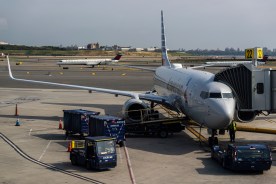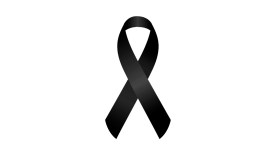Tax ignites controversy over Santa Ana’s downtown
Mendoza, 37 and the son of an immigrant, remembers how when he was a child, his family would shop in this same area, once called Fiesta Marketplace. More often than not, he says, they headed home clutching multiple bags of clothing and shoes.

This is for testing Crédito: Test Image byline
Almost a year ago, George Mendoza moved his Corona barbershop to downtown Santa Ana.
The shop, on the east side of 4th Street, features tattooed barbers and rap music. Only steps away, vendors hawk sliced fruit and businesses sell quinceañera gowns and cowboy boots.
Mendoza, 37 and the son of an immigrant, remembers how when he was a child, his family would shop in this same area, once called Fiesta Marketplace. More often than not, he says, they headed home clutching multiple bags of clothing and shoes.
“We were the Spanish-speaking family that used to shop here in the early ’80s,” he said. “And we’re the family that left.”
Almost a year ago, George Mendoza moved his Corona barbershop to downtown Santa Ana.
The shop, on the east side of 4th Street, features tattooed barbers and rap music. Only steps away, vendors hawk sliced fruit and businesses sell quinceañera gowns and cowboy boots.
Mendoza, 37 and the son of an immigrant, remembers how when he was a child, his family would shop in this same area, once called Fiesta Marketplace. More often than not, he says, they headed home clutching multiple bags of clothing and shoes.
“We were the Spanish-speaking family that used to shop here in the early ’80s,” he said. “And we’re the family that left.”
Almost a year ago, George Mendoza moved his Corona barbershop to downtown Santa Ana.
The shop, on the east side of 4th Street, features tattooed barbers and rap music. Only steps away, vendors hawk sliced fruit and businesses sell quinceañera gowns and cowboy boots.
Mendoza, 37 and the son of an immigrant, remembers how when he was a child, his family would shop in this same area, once called Fiesta Marketplace. More often than not, he says, they headed home clutching multiple bags of clothing and shoes.
“We were the Spanish-speaking family that used to shop here in the early ’80s,” he said. “And we’re the family that left.”
“We were the Spanish-speaking family that used to shop here in the early ’80s,” he said. “And we’re the family that left.”
Almost a year ago, George Mendoza moved his Corona barbershop to downtown Santa Ana.
The shop, on the east side of 4th Street, features tattooed barbers and rap music. Only steps away, vendors hawk sliced fruit and businesses sell quinceañera gowns and cowboy boots.
Mendoza, 37 and the son of an immigrant, remembers how when he was a child, his family would shop in this same area, once called Fiesta Marketplace. More often than not, he says, they headed home clutching multiple bags of clothing and shoes.
“We were the Spanish-speaking family that used to shop here in the early ’80s,” he said. “And we’re the family that left.”
Almost a year ago, George Mendoza moved his Corona barbershop to downtown Santa Ana.
The shop, on the east side of 4th Street, features tattooed barbers and rap music. Only steps away, vendors hawk sliced fruit and businesses sell quinceañera gowns and cowboy boots.
Mendoza, 37 and the son of an immigrant, remembers how when he was a child, his family would shop in this same area, once called Fiesta Marketplace. More often than not, he says, they headed home clutching multiple bags of clothing and shoes.
“We were the Spanish-speaking family that used to shop here in the early ’80s,” he said. “And we’re the family that left.”





